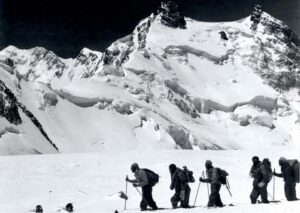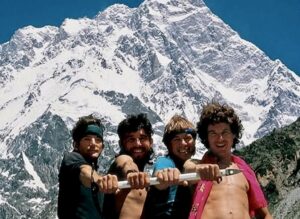The Ancestral Puebloans (or Anasazi) were ancient pre-Columbian people centred in the Four Corners of the United States — the area now bordered by Arizona, New Mexico, Utah, and Colorado. Beginning from the 12th century BC, their culture left behind some of America’s most impressive and well-preserved archaeological sites.
Their civilization thrived for centuries. They made significant architectural advancements, produced pottery, and built extensive networks of roads. Then suddenly, around 1250 AD, they vanished.
Who were they?
Anasazi means ‘ancient enemies’ or ‘enemy ancestors’ in Navajo. The term emerged in the late 19th century when American archaeologists and explorers began to study the remnants of their civilization. The researchers picked up on the word from their Navajo guides. In the 1920s, the word Anasazi was frequently used in academia, much to the dismay of another Native American tribe, the Puebloans.
The Puebloans reject ‘Anasazi’, as it carries negative and disrespectful connotations about their ancestors. Instead, they prefer to call them the Ancestral Puebloans.
Ancestral Puebloans lived throughout Utah, Arizona, Colorado, New Mexico, and in small parts of Nevada. They are three special areas associated with them: Mesa Verde National Park in Colorado, and Chaco Culture National Park and Taos Pueblo, a UNESCO World Heritage Site, in New Mexico.
The Ancestral Puebloans’ settlements contain the preserved remains of pueblos — complex multi-story houses made of adobe, stone, mud, or sandstone. They built these houses up to five stories high.
At one point, the pueblos in Chaco Canyon were some of the largest in America. The Ancestral Puebloans’ architectural prowess extended to impressive cliff settlements. They built these cliff dwellings into caves, and both their pueblos and cliff dwellings could hold thousands of people.
However, these apartment complexes were not just for habitation. They were also religious centers, observatories, and cultural centers. Some had up to 700 rooms.

Cliff dwellings in Mesa Verde. Photo: Judson McCranie
An advanced culture
The Ancestral Puebloans were astronomers, architects, and sophisticated road builders. Like the Inca, whose roads radiated out from important cities, the Ancestral Puebloans built roads nine metres wide and over 640km long, fanning out from sacred cultural centres. Archaeologists discovered several major roads: the Great North Road, South Road, West Road, Coyote Canyon Road, Mexican Springs Road, and Chacra Face Road. This facilitated trade and partnerships with neighboring groups.
Their development and accomplishments spread over nine historical periods. The period known as Pueblo II or the Golden Age was from 900 AD to 1150 AD. During this period, the Ancestral Puebloans peaked socially, economically, and culturally. At the height of its civilization, it comprised approximately 30,000 people.
What happened?
Historians agree that the Ancestral Puebloans emigrated from their homes in the 12th and 13th centuries. These years saw successive waves of natural disasters. In the mid-1100s, the North American climate began to change. From 1276 to 1299, the infamous Great Drought devastated the region, lasting an agonizing 300 years. In 1257, a massive volcanic eruption in Indonesia plunged the globe into a volcanic winter and led to the Little Ice Age.
Several archaeologists and historians agree that such environmental factors played a major part in the disappearance of the Ancestral Puebloans. The drought and resultant crop failure may have forced them to leave in search of water. There is also the possibility of increased deforestation and erosion.

Chaco Canyon pueblo ruins. Photo: United States National Park Service
Another possible reason for their disappearance is war. Archaeologists excavated an area called Castle Rock in Colorado and found evidence of dismemberment, torture, and cannibalism. The perpetrators are unclear. However, raiding was common throughout the various Native American groups. Perhaps the Ancestral Puebloans’ migration caused territorial disputes or opportunities for other tribes to steal resources.
Lastly, scholars believe that religious strife could have played a role in their collapse. Archeological evidence shows the destruction of religious sections of the pueblos. This suggests that there was religious rivalry among the groups in the region.
The takeaway
The fate of the Ancestral Puebloans mimics the Moche in Peru centuries prior. It seems likely that the Ancestral Puebloans fell victim to the period’s dramatic climate change and its social consequences. Forced to move in search of food, water, fertile soil, and general stability, some may have integrated with other tribes.






